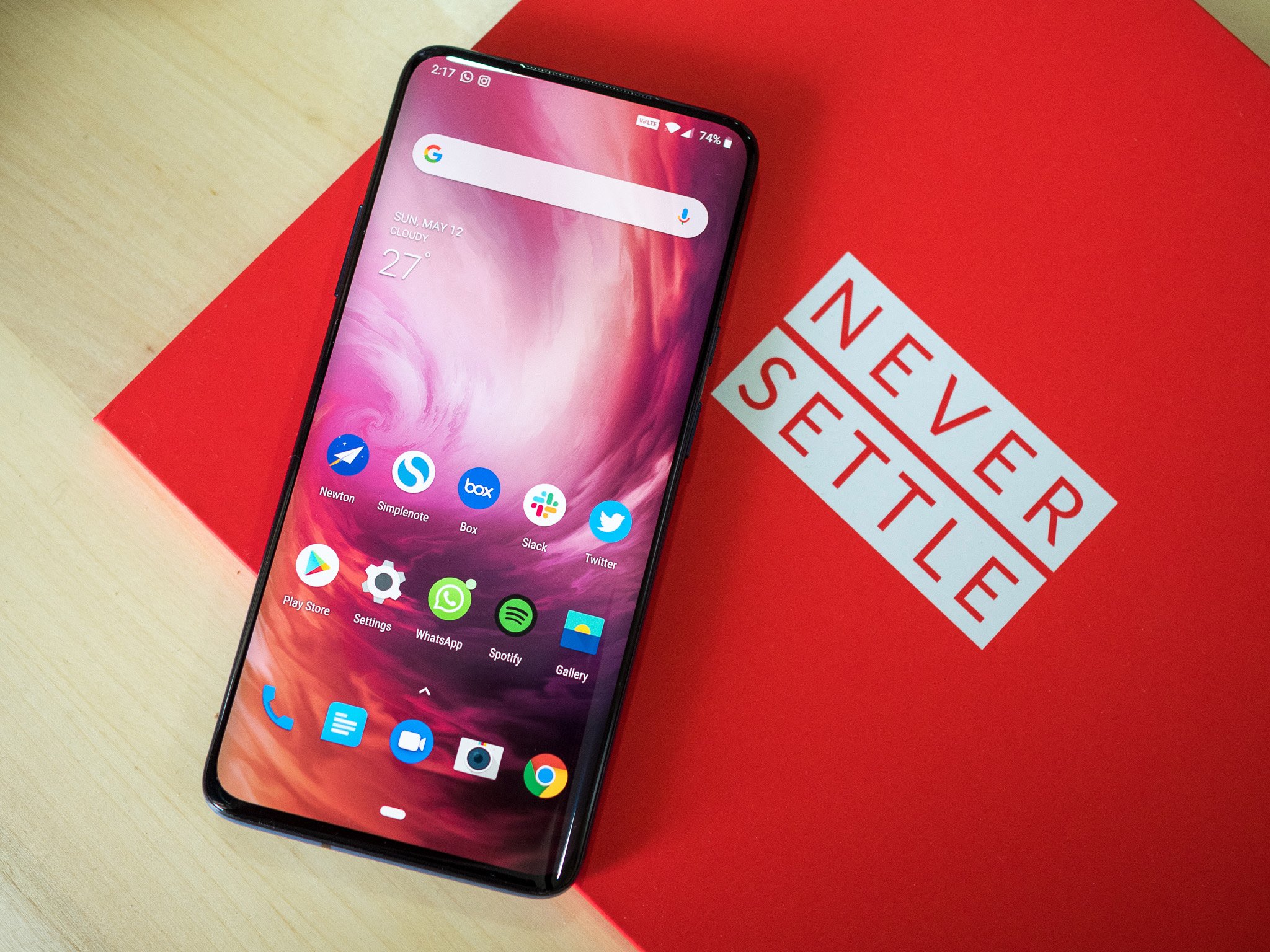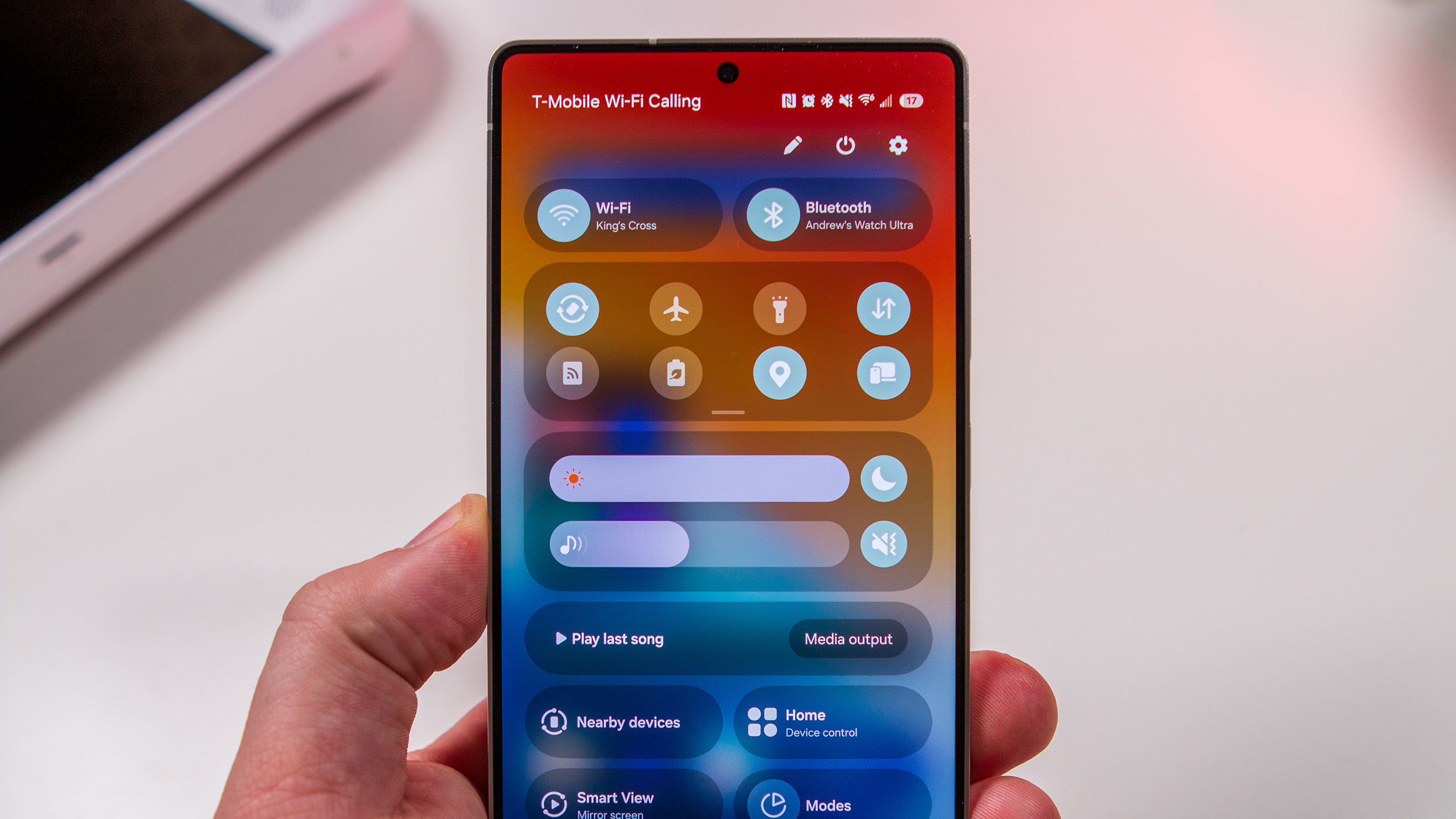If you look at the phones OnePlus launched over the last two years, there's a clear pattern. The OnePlus 5 and 5T ushered in a new design aesthetic that was much more modern, and last year's OnePlus 6 and 6T built on that vision by introducing new materials and upgraded hardware.
Design is a key area of focus for the company, and CEO Pete Lau, in particular, is obsessive about getting all the details right. I talked to him ahead of the launch of the OnePlus 6T last year, and he mentioned that the particular red color OnePlus chose for the OnePlus 6 Red cost more money, but they went with that option anyway because of how vibrant it looked.
This obsessive attention to detail is evident when you look at the OnePlus 7 Pro. OnePlus is splitting its strategy this year, rolling out the OnePlus 7 Pro to take on the likes of Samsung and Google while offering the OnePlus 7 as a more value-driven alternative. The OnePlus 7 Pro has all the new tech: a gorgeous 90Hz QHD+ display, 30W wired charging, and UFS 3.0 storage. The OnePlus 7 meanwhile comes with slightly refreshed hardware in the same chassis as the OnePlus 6T. Think of it this way: the OnePlus 7 Pro is the company's flagship for 2019, and the OnePlus 7 is more like the OnePlus 6TT.
The new additions have significantly increased the price of the device: the OnePlus 7 Pro starts off at ₹48,999 ($705), or ₹12,000 ($175) more than the OnePlus 6T. That puts the device closer to the likes of the Galaxy S10e than value flagships like the POCO F1. Let's see if the OnePlus 7 Pro can hold its own in this segment.
The Good
- Stunning 90Hz display
- Latest hardware specs
- Stereo speakers
- Notch-free design
- Clean software experience
- 30W wired charging
The Bad
- Mediocre camera
- Too large and unwieldy
- No IP rating
- No 3.5mm jack
About this review
I'm writing this review after using the OnePlus 7 Pro for just over three weeks. I used the device primarily in Hyderabad, and took it on a week-long junket to Beijing and Shenzhen. OnePlus rolled out a few updates to the phone, with the latest build (9.5.4.GM21AA) bringing camera fixes. The phone was connected to Airtel and Jio's 4G networks in Hyderabad.
OnePlus 7 Pro Hardware
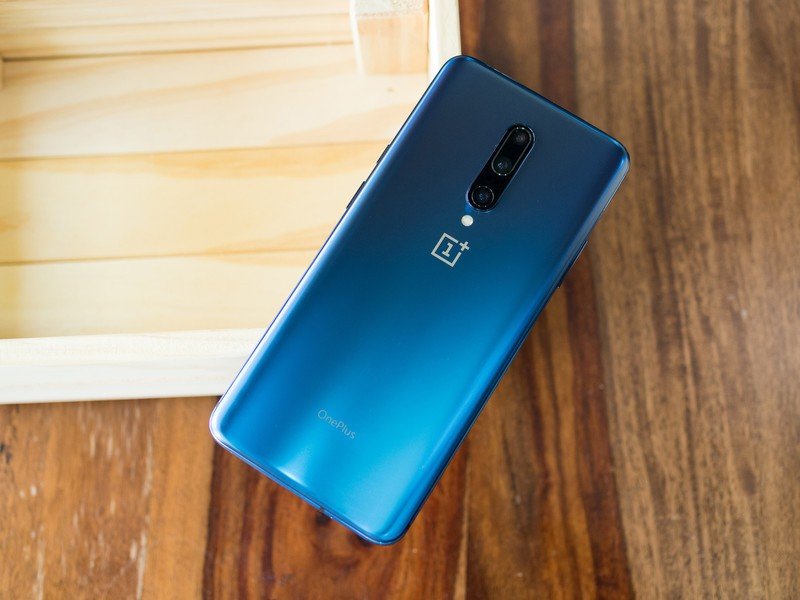
The first thing you notice on the OnePlus is the display. OnePlus has steadily been increasing the display size on its devices for the last two years, and the OnePlus 7 Pro sports a massive 6.67-inch screen. That's one of the largest displays on a phone today, and OnePlus was able to cram that panel into a chassis that's just 5mm taller than the 6T by getting rid of the camera cutout.
The bezels have been reduced by some margin as a result, and the OnePlus 7 Pro is one of the best all-screen designs I've seen to date. There are barely any bezels at the top and bottom, and what's even more impressive is the fact that OnePlus managed to put an earpiece that acts as a secondary speaker above the top bezel. But more on that later.
Like last year's devices, the OnePlus 7 Pro has a glass back — encased in Gorilla Glass 5 — and you can pick up the device in Mirror Gray or Nebula Blue color options. I've been using the latter, and it is one of the best color variants OnePlus has launched to date. The design is rich and lustrous, and you get an anti-glare coating that gives the device a matte-like finish at the back. There are three cameras at the back, and the oblong camera housing protrudes slightly from the body of the phone.
The best all-screen design to date, with a 90Hz display that changes how you interact with your phone.
The Alert Slider is once again on the right, sitting just above the power button. The volume rocker is on the right, and at the bottom, you get a USB-C charging port and primary speaker. Overall, the design combined with the fit and finish make the OnePlus 7 Pro every bit as premium as the latest flagships from Samsung.
Retractable cameras are the new notch, and the OnePlus 7 Pro has a mechanized slider that's similar to what Vivo has been doing in this space for just over a year. The module pops up whenever you need to take a selfie or for face unlock, and OnePlus says the mechanism lasts over 300,000 times. Furthermore, the module works in conjunction with the gyro and accelerometer to detect if the phone is taking a tumble, at which point it will automatically retract to prevent any damage.
The all-screen design makes the display on the OnePlus 7 Pro one of the most immersive you'll find on a phone today. Alongside the switch to a larger panel, OnePlus has also increased the resolution of the screen, with the phone being the first from the brand to offer a Quad HD+ Fluid AMOLED panel. Then there's the fact that the screen is curved on both edges, much like recent Samsung flagships.
But what makes the screen truly stand out is the 90Hz refresh rate. The higher refresh rate coupled with the QHD+ panel and the robust internal hardware makes everyday interactions buttery smooth. Apps load instantly, and browsing long-form content on Chrome and scrolling through Instagram posts have been an absolute joy.
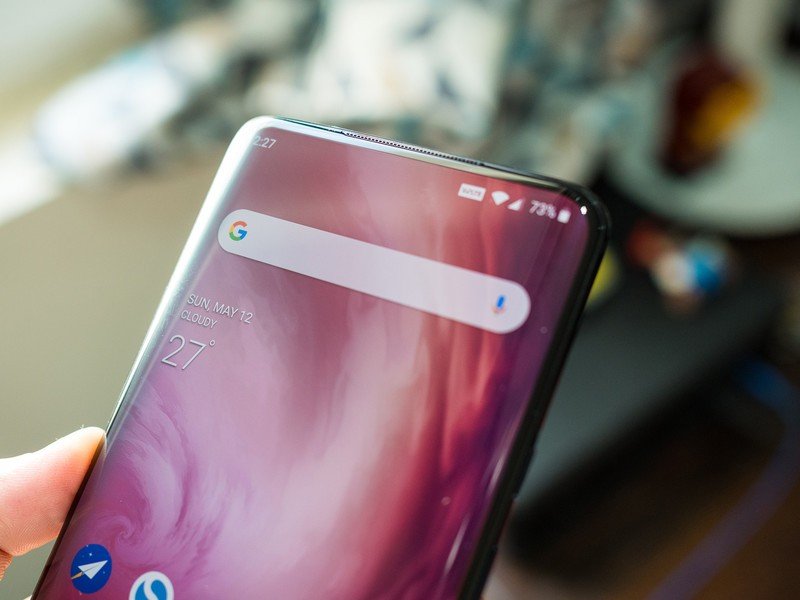
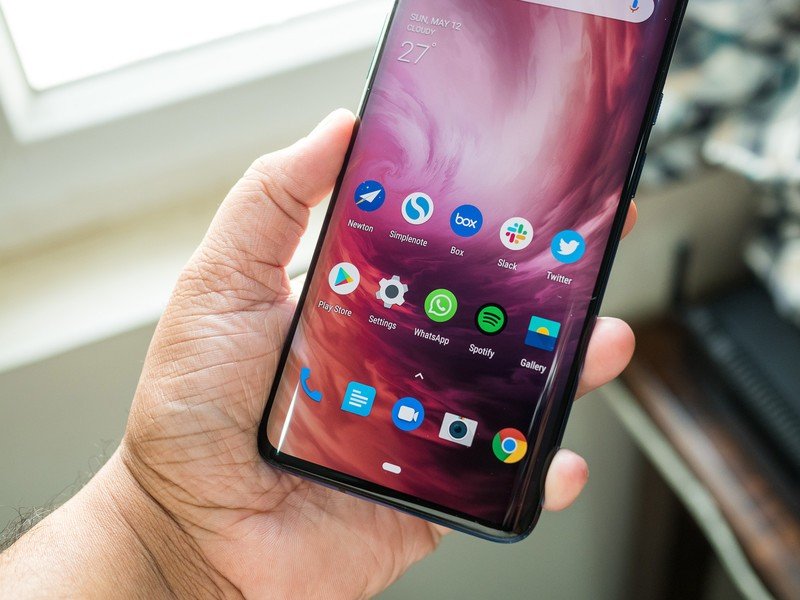
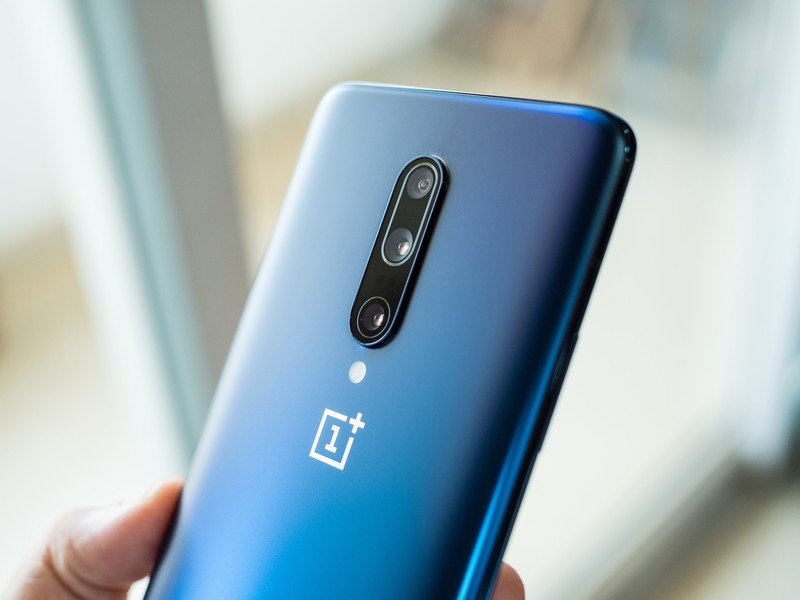
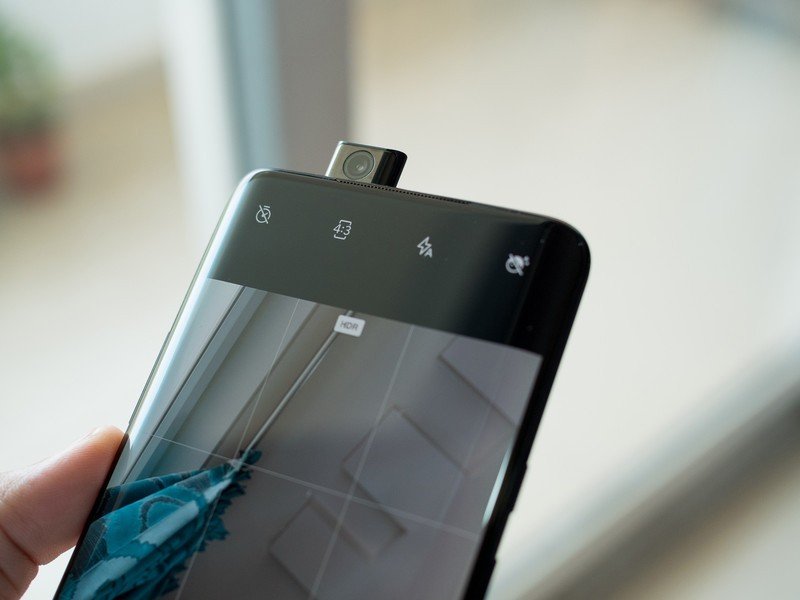
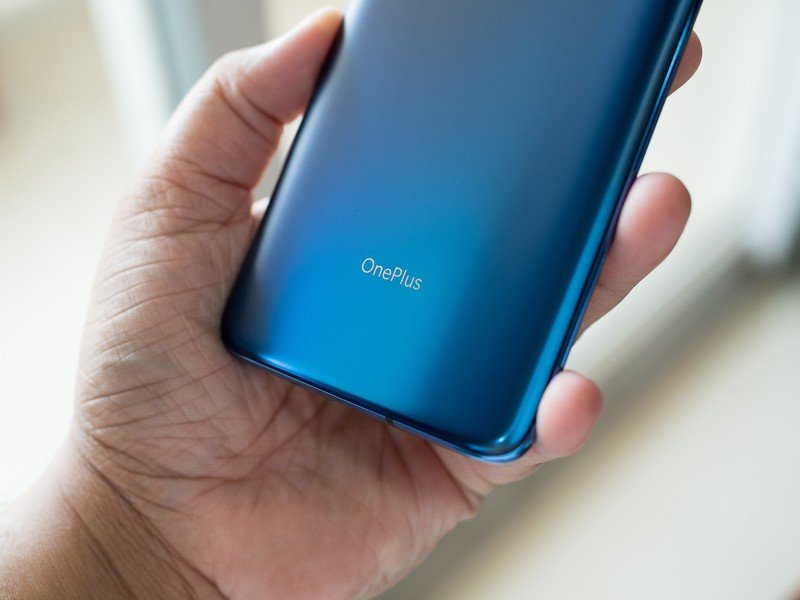
The display is also rated for HDR10+, also a first for OnePlus. The OnePlus 7 Pro is particularly great as a media consumption device thanks to the large bezel-less screen and stereo speakers. The stereo speakers get surprisingly loud — so much so that I had to turn the volume down to about 60% while streaming content — but all that volume doesn't exactly correspond to clarity. The stereo setup on the Pixel 3 XL does a much better job both with signal separation and overall clarity.
As has been the case for some time now, you get a wealth of customization options for the display. You can choose the display modes during initial configuration — a welcome change — and you get to pick from Natural, Vivid, or Advanced modes. Vivid boosts colors, and in Advanced you get to select from sRGB, AMOLED Wide Gamut, or DCI-P3. You can also manually adjust the color temperature to your liking.
In addition to screen calibration, you can also tweak the refresh rate from 90Hz to 60Hz and lower the resolution to FHD+ — with both options designed to eke out more battery life. There's also an ambient display that shows the time and unread notifications. There's no notification LED on the device, but OnePlus is rolling out a new feature called Horizon Light that lights up the sides of the screen whenever there's a new notification.
With HDR10+ and stereo speakers, the OnePlus 7 Pro is particularly great as a media consumption device.
As good as the display is, you won't be able to play games at 90fps just yet. OnePlus says it is still testing thermal management and that it'll whitelist games to make use full use of that 90Hz panel shortly. Most Android games are locked to 60fps, but with ASUS and Razer rolling out devices with high refresh rates, there's now a decent list of titles that go up to 90fps.
The Snapdragon 855 is a new chipset — the OnePlus 7 Pro is the first device in the country to feature it — and while the shift to a 7nm node enables even more gains in energy efficiency, it is an untested platform. As such, there's a lot of testing required before OnePlus whitelists games that can be played at 90fps. It would have been ideal if OnePlus did the requisite testing before launching the phone, but you'll have to wait for a software update before you can play Mortal Kombat X at 90fps. For now, you'll have to make do with silky-smooth scrolling in the likes of Facebook, Chrome, and Instagram.
Rounding out the display side of things, OnePlus has tweaked Night Mode to allow the screen brightness to go all the way down to 0.27 nits. That makes it easier to view the screen at night, and the mode also adds a blue light filter to prevent eye strain. Reading mode is also back, and it continues to be one of my favorite features in OxygenOS. With Reading mode, the screen essentially turns monochrome, making it ideal to read longform content. With the larger dimensions of the display, I ended up using the OnePlus 7 Pro as a more portable Kindle.
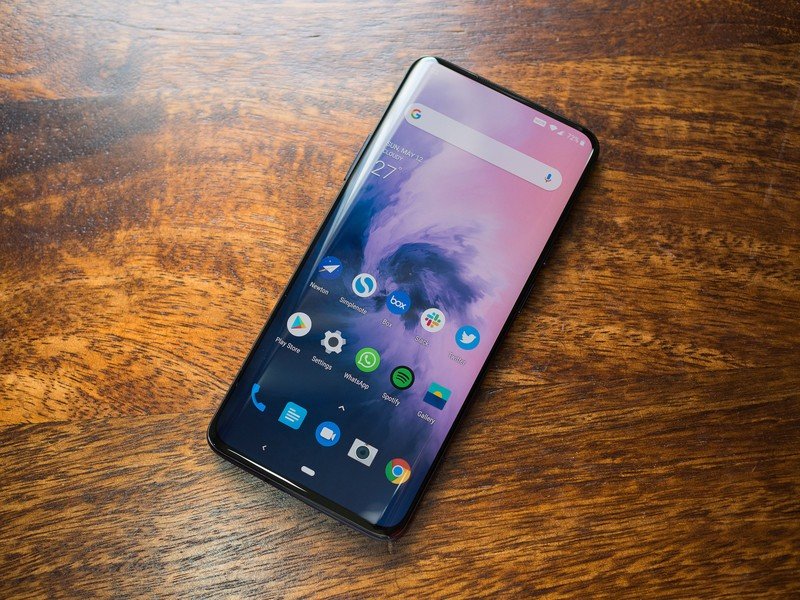
OnePlus lavished a lot of attention on the display, but that doesn't mean it ignored the rest of the hardware. The OnePlus 7 Pro has the latest internal hardware you'll find on any phone today, and it is the first mainstream device to sport UFS 3.0 storage.
The Snapdragon 855 chipset comes with several improvements over the Snapdragon 845, with Qualcomm now using a single "prime" core that's clocked significantly higher. There's a single Kryo 485 core clocked at 2.84GHz backed by three Kryo 485 cores at 2.42GHz, and they together make up the high-performance cores.
With a Snapdragon 855 and UFS 3.0 storage, the OnePlus 7 Pro is the fastest phone you'll buy in 2019.
In addition to higher frequencies, the prime core also has 512KB of L2 cache, versus 256KB for the other three cores. All four cores are based on ARM's Cortex A76 core, and for energy-efficient tasks the chipset relies on four 1.8GHz cores that are derived from the Cortex A55. These low-energy cores have a 128KB L2 cache.
Qualcomm is touting a performance increase of 45% over the Kryo 385 cores on the Snapdragon 845, and 20% uptick with the Adreno 640 over the Adreno 630. The Snapdragon 845 was no slouch to begin with, and the gains with the Snapdragon 855 means it should be able to handle everything you throw at it for some years to come.
The OnePlus 7 Pro comes with 6GB of RAM and 128GB of storage as standard, and there's also a variant with 8GB of RAM and 256GB of storage. The high-end option comes with a staggering 12GB of RAM and 256GB of storage, and given that even 8GB of RAM is overkill on a phone, you're better off going with the 8GB model.
In day-to-day use, the OnePlus 7 Pro is the fastest phone I have ever used. The top-notch internal hardware coupled with the 90Hz display and OxygenOS' clean interface means the OnePlus 7 Pro delivers speed that you just won't find on other phones. I've used other devices based on the Snapdragon 855 — most recently the Mi 9 — but it didn't feel anywhere as fast as the OnePlus 7 Pro. The speed on offer here is addictive.
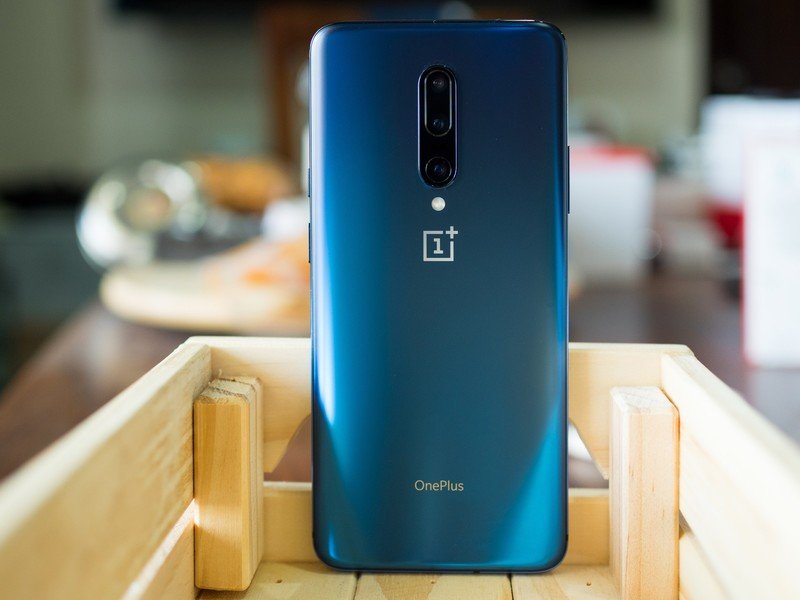
There wasn't a time when I felt that the phone was slow or laggy, even when playing visually intensive titles. Wi-Fi performance was similarly stellar thanks to the 2x2 MIMO modem, and I didn't face any issues with calls either — VoLTE works just fine on both Airtel and Jio.
A much better haptic engine, speedy face unlock, and 30W wired charging.
OnePlus made a lot of improvements in other areas as well. The haptic engine in particular has picked up a much-needed overhaul via an x-axis motor, and while it isn't quite as good as the motor on the Pixel 3, it comes pretty close. The fingerprint sensor is also significantly better than the one on the OnePlus 6T, and it is one of the better optical modules I've used this year.
Face unlock isn't quite as fast as it used to be as the camera module now has to pop up to authenticate your features, but it is still a viable biometric option. Like previous years, face unlock is primarily software driven and isn't as secure as a PIN.
The OnePlus 7 Pro has a 4000mAh battery, but because of the 90Hz display, you won't see any difference in this area over previous OnePlus devices. I struggled to get the phone to last a day during the initial week, but a software update made things much better. I now routinely manage to get a day's worth of use consistently, with an average screen-on-time of just over five hours.
And when you do need to charge the phone, you can rely on Warp Charge, which delivers a 30W charge. You'll be able to charge from zero to 50% in just over 20 minutes, and up to 50% in 30 minutes while gaming.
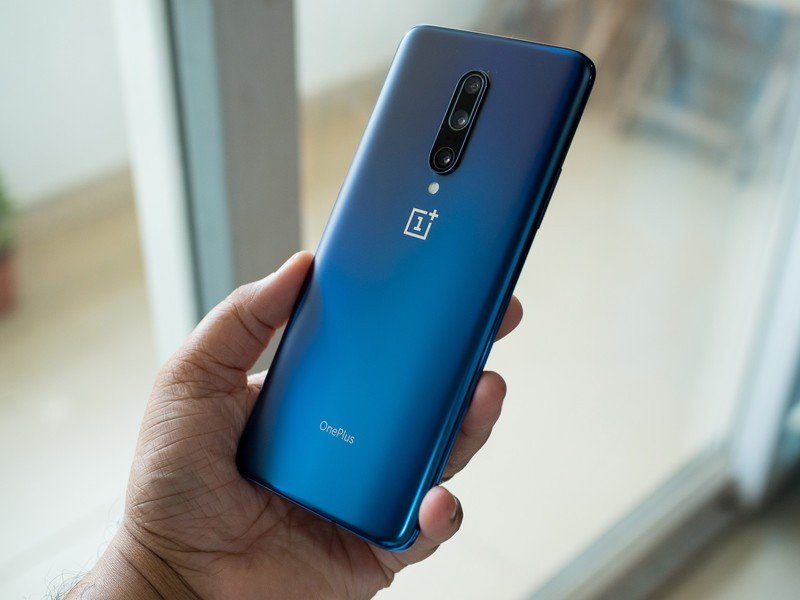
A knock-on effect as a result of that large screen and 4000mAh battery is the weight. At 206g, the OnePlus 7 Pro is easily the heaviest phone I've used in a long time, and I don't really understand where all that extra weight is coming from. The Galaxy Note 9 has roughly similar dimensions and is made out of glass, but has gaskets for water resistance, a housing for the S Pen, a 3.5mm jack, and coils for wireless charging and Samsung Pay. But it still ends up weighing 201g, five grams less than the OnePlus 7 Pro.
You'll have to use a case with the OnePlus 7 Pro, making an already heavy phone even heavier.
The weight does lead to fatigue if you're using the OnePlus 7 Pro when lying down, and because of the bezel-less design and matte finish at the back you'll have to use the device with a case, increasing the weight further. While the Note 9 weighs nearly as much, I didn't run into any issues while using that device, and it's because Samsung did a better job with weight distribution. The OnePlus 7 Pro feels too top-heavy, and that makes the device unwieldy.
There's a clear case bundled in the box, and OnePlus has a great selection of first-party case options. Talking about bundled items, you don't get a USB-C to 3.5mm dongle in the box, nor are there any earbuds included with the device.
And as we're on the subject of things that are missing, the OnePlus 7 Pro doesn't have an IP rating or wireless charging. Their omission wasn't a big deal in previous years, but with the device now costing ₹48,999, the expectations are higher. I'm okay with the fact that there's no wireless charging, but water resistance is a table stakes feature in 2019. If OnePlus has the money to pay Robert Downey Jr., it can pay to get its phone tested for water resistance.
OnePlus 7 Pro Software
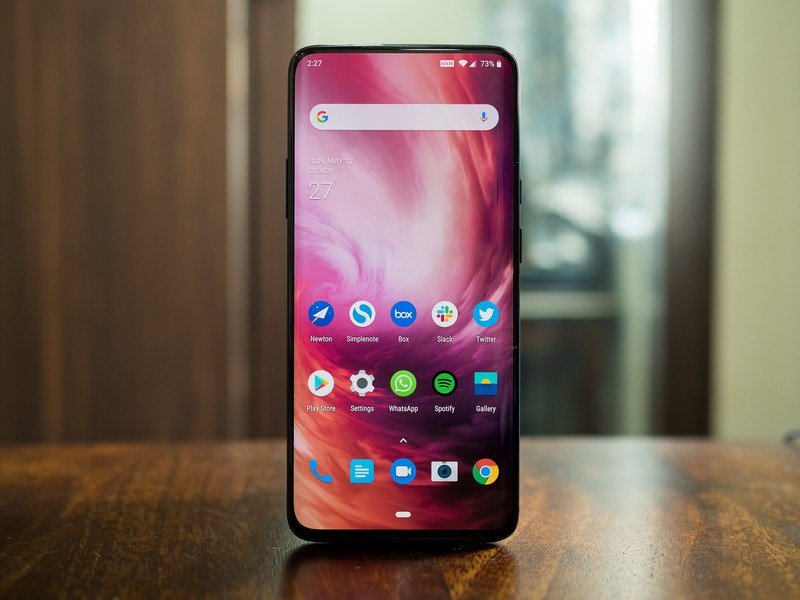
OnePlus hasn't changed a lot of things from a software standpoint, and that's a good thing. OxygenOS is my favorite third-party skin for its combination of simplicity backed by robust customization options. OnePlus has managed to strike the ideal balance here: there's plenty of features that power users will enjoy, but you don't need to fiddle around in the settings for hours on end to get the phone to behave. If you're not one for customization, just use the default settings out of the box and you'll still get a pretty great experience.
The same OxygenOS experience as before, but with a little extra for Indian users.
While OxygenOS 9.5 feels very familiar when it comes to the interface itself, OnePlus has added a host of features to differentiate its custom skin even further. There's now a native screen recorder feature that lets you easily record games or any troubleshooting steps, and the best part about it is that you can also record your own audio. You can pause and resume whenever you want, choose the resolution and bitrate to record your footage in, and so much more.
OnePlus is also taking its gaming mode one step further with Fnatic mode. The name should be immediately familiar to anyone that plays e-sports, with OnePlus partnering with Fnatic to essentially turbocharge gaming mode. When you enable Fnatic mode, everything gets dialed up to the max, with notifications, calls, and all background activity silenced.
There's also a new Zen Mode that's designed to help you with phone addiction. If you enable Zen Mode, your phone basically becomes unusable for 20 minutes, and all you'll be able to do is make emergency calls and take photos. OnePlus says it's designed to encourage users to put their phones down and interact with their environment. If you don't want to do that, there's nothing to worry about — Zen Mode is an opt-in feature.
Here are all the new features in OxygenOS 9.5
India is OnePlus' largest market, with the country accounting for just over a third of the company's global sales. That's why OnePlus is rolling out a ROM that's customized for the Indian market, with features that will be exclusively available to Indian customers. The native SMS app will start filtering spam messages and automatically start categorizing texts into folders — much like Microsoft's excellent SMS Organizer — and it will also surface information like OTPs and PNRs.
The dialer is also getting spam call prevention and caller identification, and OnePlus is rolling out its SIM-free roaming service in the country. Finally, there's a Work-Life Balance feature that lets you manage what apps get to send you notifications during the day.
The India-exclusive features are going live in an OxygenOS beta build that will roll out at the end of June, and I'll go into more detail about the new additions at that time.
OnePlus 7 Pro Camera
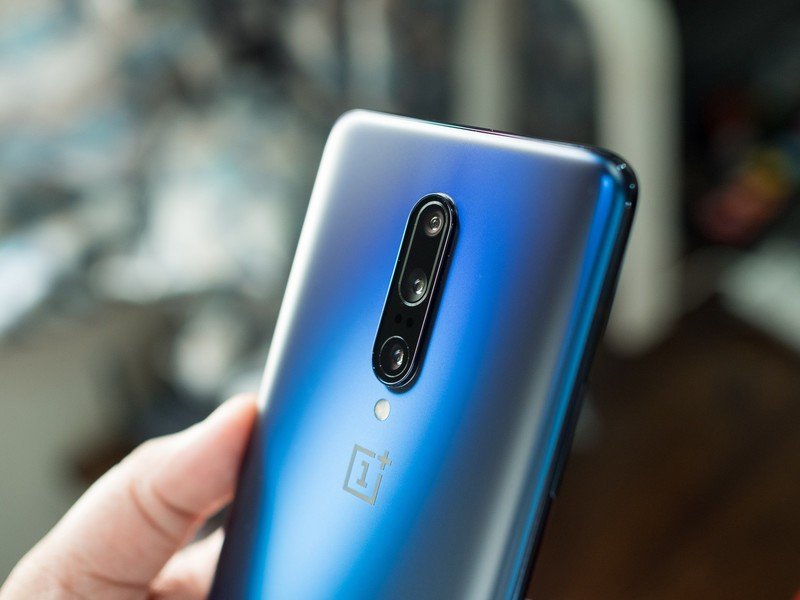
Camera tuning has been OnePlus' Achilles heel for some time now, and that hasn't changed with the OnePlus 7 Pro. The rest of the hardware has picked up a considerable upgrade, and while the company is using new camera sensors, the overall quality hasn't changed drastically from last year.
Before we get to that, a refresh of the hardware you're getting with the OnePlus 7 Pro: there's a primary 48MP f/1.6 camera backed by an 8MP telephoto lens and 16MP wide-angle shooter. The primary lens has OIS and EIS, and the zoom lens also has OIS.
The wide-angle lens offers a 117-degree field of view, and the 8MP telephoto delivers 3x optical zoom. There has been some confusion around the focal length and sensor size as the telephoto lens is using a 13MP sensor, but it essentially crops it down to 8MP to get 3x zoom.


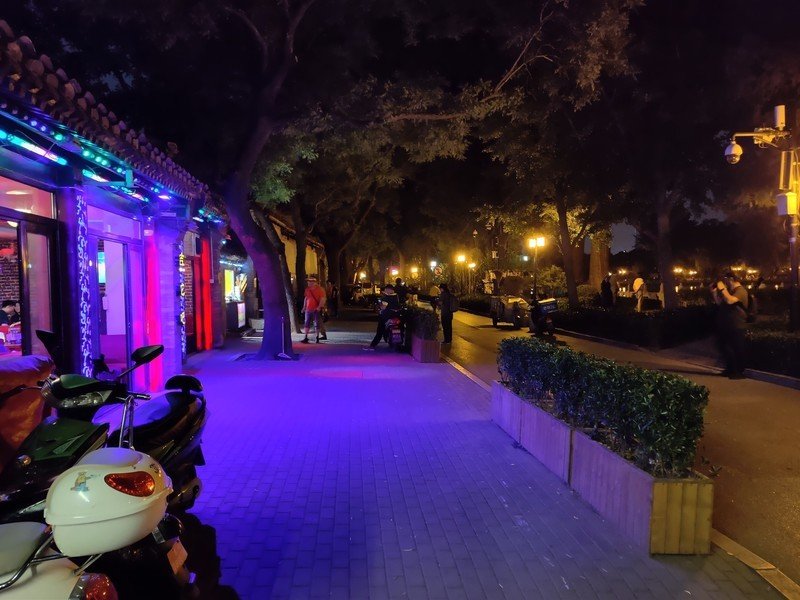




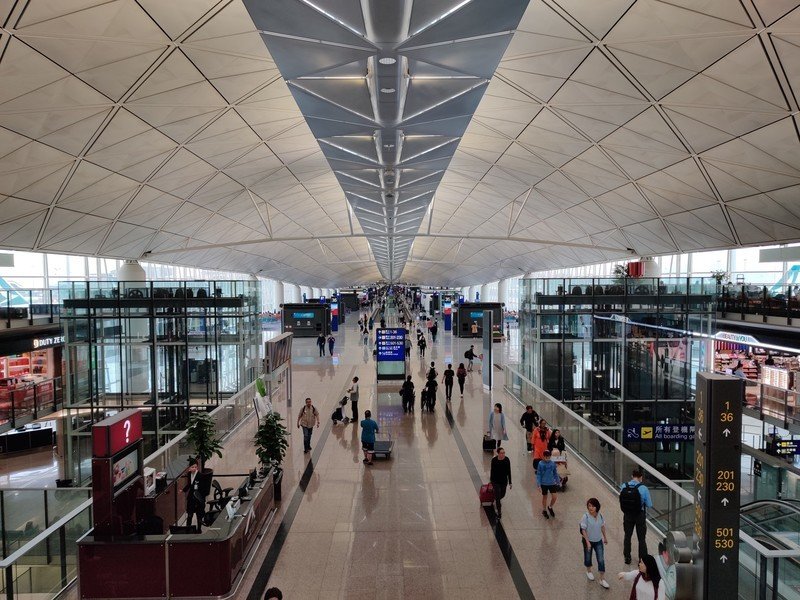
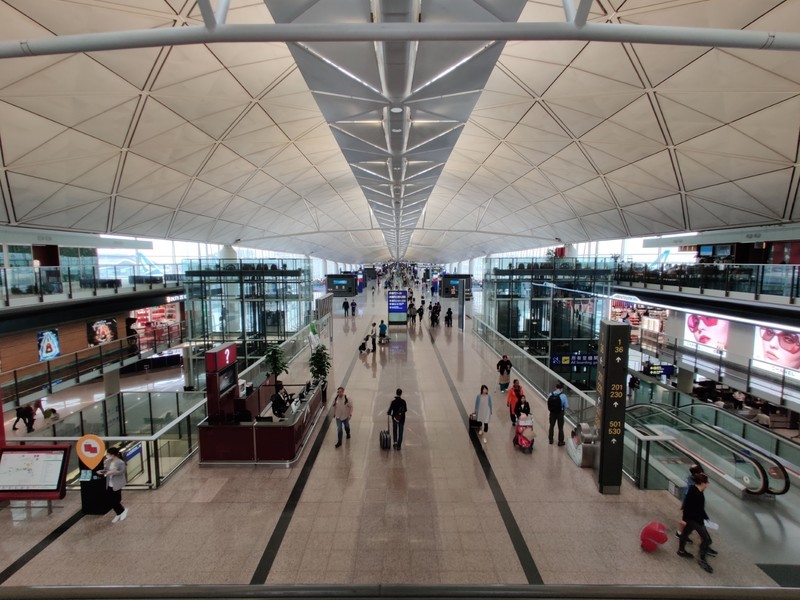

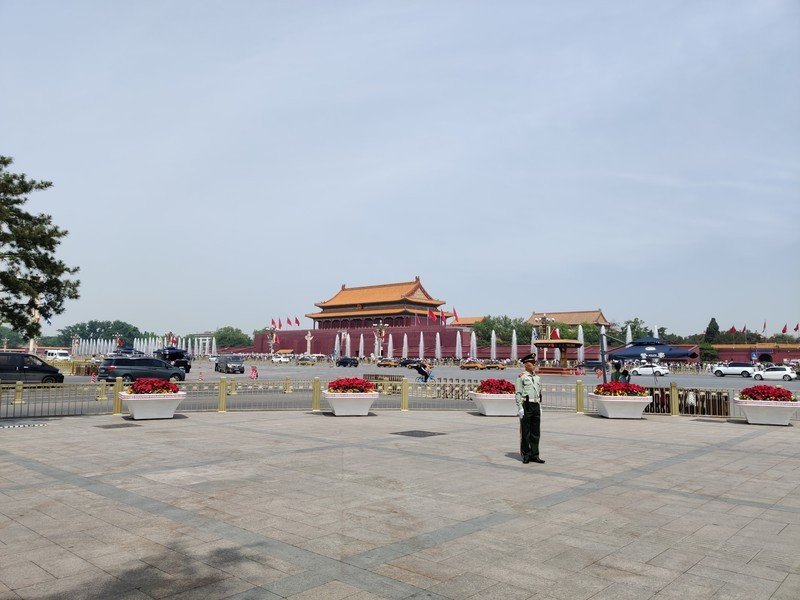
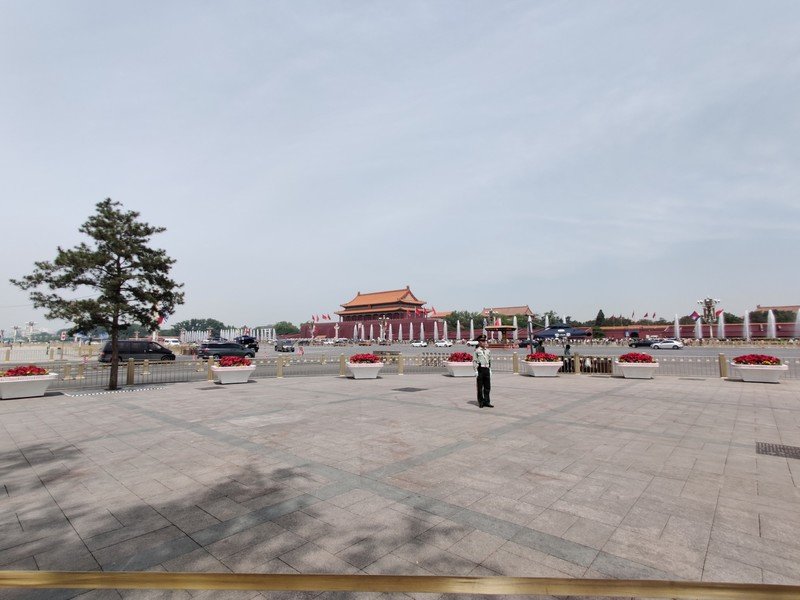
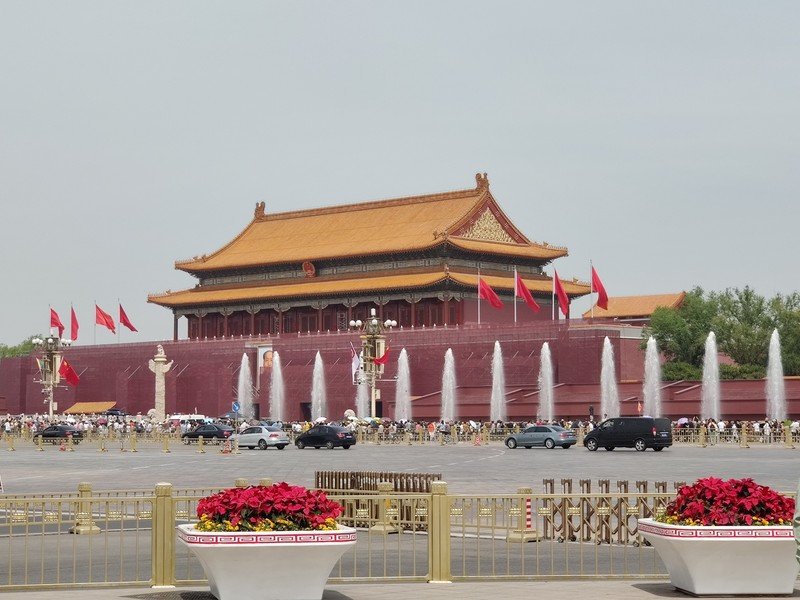






The OnePlus 7 Pro takes detailed photos in daylight conditions, with decent dynamic range and true-to-life colors. The camera relies on pixel binning to produce 12MP shots from the 48MP sensor, resulting in better detail. But photos taken in low-light weren't anywhere as good as what you'd get on the Pixel 3, Galaxy S10, P30 Pro, or even the Mi 9. Colors are muddled and there's far too much noise in the resultant photos. The dedicated night mode does a better job, but overall this isn't the quality you'd expect from a phone that costs ₹50,000.
For ₹48,999, you deserve a phone with a much better camera.
The wide-angle lens is also not up to the mark, with significant lens distortion and dull colors. The telephoto lens fares slightly better when it comes to colors, but you lose out on a lot of detail. The zoom lens also pulls double duty as the portrait camera, and it does a much better job in this regard. The front camera, meanwhile, is strictly average for selfies.
Right off the bat, OnePlus acknowledged that it would fix the camera optimization, with the latest OxygenOS build (9.5.4.GM21AA) designed to do just that. While you get marginally better dynamic range, it doesn't really move the needle in any significant way. You still get average photos out of the device, and what's particularly frustrating is that the same sensor on other phones has delivered much better results.
This is clearly a case of OnePlus not being able to tune the camera on its phones, and it needs to do much better in this regard if it wants to play with the likes of Samsung, Google, and Huawei. Huawei, in particular, has rolled out meaningful innovations in this space this year, and Google continues to dominate when it comes to computational photography.
OnePlus' solution thus far has been to add higher-res sensors to its devices, but that particular strategy hasn't worked for the manufacturer. It needs to dedicate the time and resources to optimize its cameras, because the hardware on offer is right up there with the best available today.
OnePlus 7 Pro Bottom line
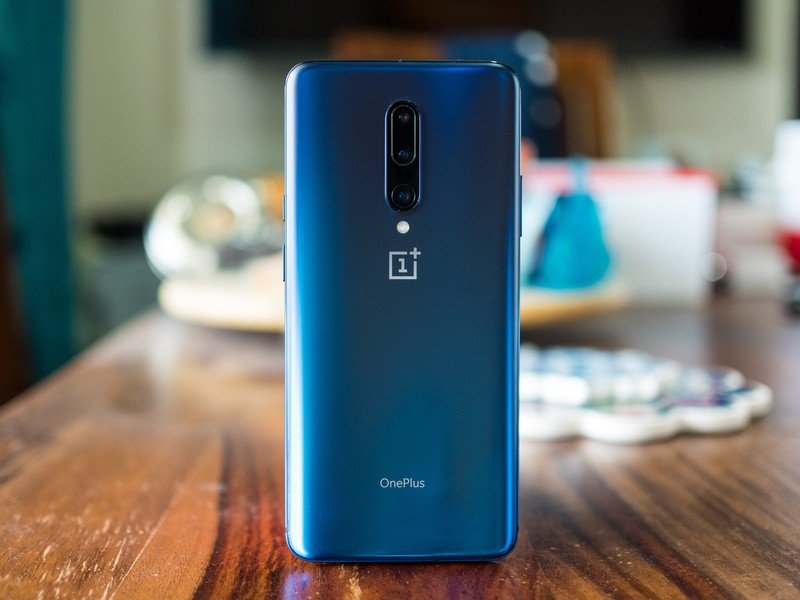
The OnePlus 7 Pro is the most ambitious phone OnePlus has released to date, and it got a lot of things right. The company's forte is in hardware, and in that regard, the OnePlus 7 Pro is an absolute beast. I'm not exaggerating when I say that this is the fastest phone I've used.
A fantastic phone with great hardware that's let down by a sub-par camera.
The 90Hz display is an absolute delight, and you have to use it to see just how smooth it is. The hardware on offer should easily last a few years without any issues, and the all-screen front makes the OnePlus 7 Pro an ideal device for gaming and viewing multimedia content on the go.
The rest of the hardware has seen noticeable upgrades as well: stereo speakers are a welcome addition, and the in-screen fingerprint sensor is much better this time around. The 4000mAh battery is good enough for a day's worth of use, and 30W wired charging means you can easily top up during the day.
The only area where the device falls short is the camera. The primary camera is nowhere near the potential of what Sony's IMX 586 module can deliver, and OnePlus shouldn't have bothered with the wide-angle lens at all. Here's to hoping that OnePlus can turn things around with software updates in the coming months.
4 out of 5
Even at ₹48,999, the OnePlus 7 Pro is ₹25,000 ($360) less than the Galaxy S10+, making it a decent purchase in terms of value. You're not getting a camera that can hold up to the likes of the Galaxy S10+, the Pixel 3 series, or the P30 Pro, but this isn't new: OnePlus has always struggled with tuning the cameras on its phones. The Chinese manufacturer has done a great job overall, and if you're okay with the tradeoffs with regards to the camera and lack of an IP rating, the OnePlus 7 Pro is the device for you.
If you're not convinced yet, I'd suggest holding off. ASUS' ZenFone 6 looks very interesting, and it also has similar innards, clean software, as well as a rotating camera module. The value flagship space has a lot of room to grow in India, and there won't be any shortage of options in this category in the coming months.
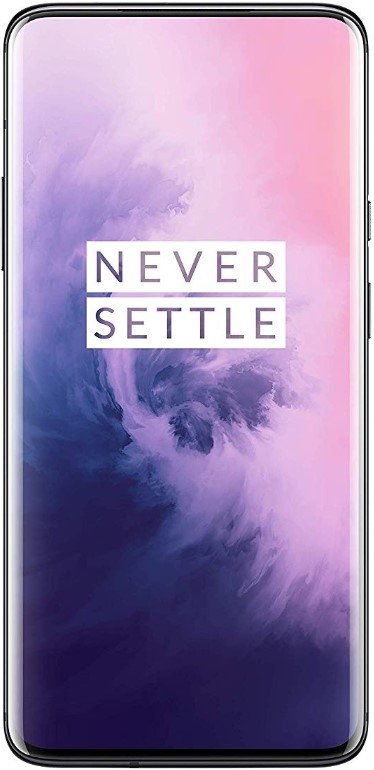
OnePlus 7 Pro
The best phone with the least impressive camera.
The OnePlus 7 Pro has a stunning new QHD+ display, and the 90Hz refresh rate makes everyday interactions buttery smooth. The internal hardware has been refreshed for 2019, and right now, this is the fastest phone in the market today. That said, the camera isn't nearly as good as what you get with Samsung or Google, and you miss out on an IP rating and wireless charging.

Harish Jonnalagadda is Android Central's Senior Editor overseeing mobile coverage. In his current role, he leads the site's coverage of Chinese phone brands, networking products, and AV gear. He has been testing phones for over a decade, and has extensive experience in mobile hardware and the global semiconductor industry. Contact him on Twitter at @chunkynerd.
